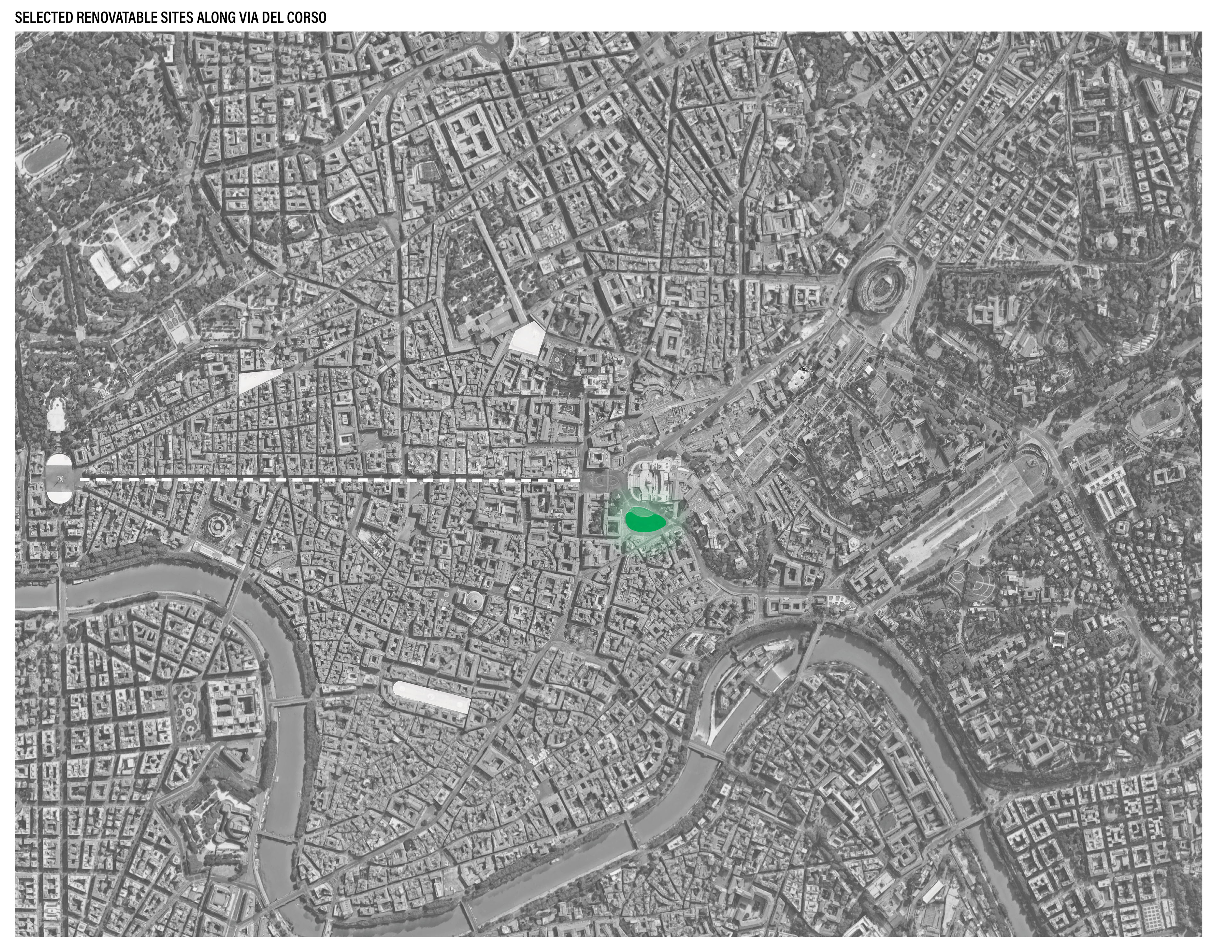

ROME, ITALY In this project we were tasked with creating an urban intervention in the city of Rome. As a starting point, we chose a site, a place within the city that could use an intervention; for our group the site was Piazza Venezia. Piazza Venezia is situated at a major hinge point on the Via Papalis that connects major tourist attractions from San Pietro to the San Giovanni in Laterano. We decided that the traditional Piazza typology needed restructuring. Modern Rome has become a tourist city for the multi-month study abroad to the one week culture tourist. The traditional Piazza typology does not support this social change from a city for life long residency to temporary getaway. They often lack: a place to sit, green or soft space, shade, respite, cooling, quiet space, or a public bathroom (almost impossible to find in the city). Our response was to create objects that fulfilled these new needs with non-traditional forms while embracing historically Roman materials and ideals. Through the use of bronze, travertine, and water as materials with views, history, and nature as driving ideals. Most of the forms were derived from grasshopper through the process of “kit-bashing”. We also took proportions and ratios from a nearby influential building, the Palazzo Conservatori on the Campidoglio. Our response is intended to be able to fit into many different places, creating multiple modern piazzas throughout the city. Working with grasshopper and a building or monument of significance would allow for a quick way to interpolate from the forms generated on the Piazza Venezia site, with the Campidoglio to many other sites. For example Piazza del Popolo and its twin churches. Or Piazza de Spagna and the Spanish Steps. This typology is not only applicable to Rome, but many European cities that are growing on top of themselves, and some East Asian cities as well. It could even be an early intervention in cities like New York similar to what we've seen with the high line. The opportunities with parametric software multiplied by sense of place and cultural significance can elevate projects of the sort to the next level.

